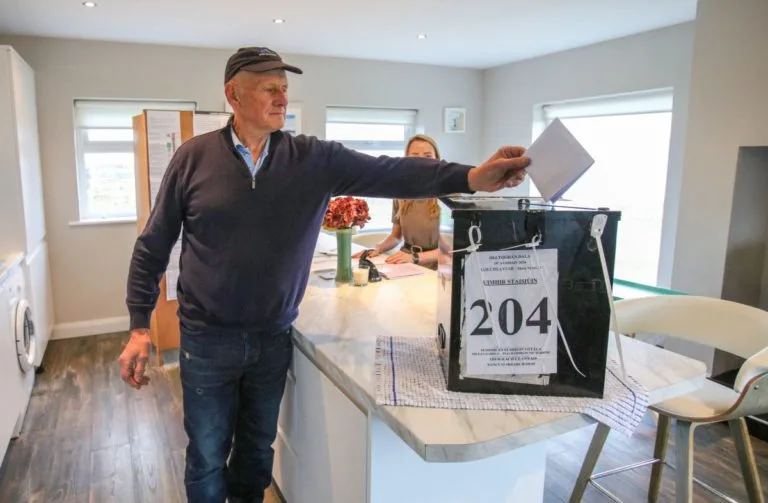Vote counting in Ireland’s general election begins on Saturday, with exit polls suggesting a tight race between the country’s three main parties.
The exit poll, released after voting concluded late on Friday, showed Sinn Féin, the pro-Irish unity party, leading with 21.1% of the vote. Close behind, with 21.0%, is Fine Gael, the centre-right party led by outgoing Prime Minister Simon Harris. Fianna Fáil, Fine Gael’s coalition partner in the outgoing government and led by Deputy Prime Minister Micheál Martin, was in third place with 19.5%.
Counting started at 0900 GMT, with partial results expected throughout the day. However, a final result may take several days due to Ireland’s proportional representation system, which requires multiple rounds of counting and the redistribution of votes from eliminated candidates.

During the previous parliamentary term, the role of prime minister alternated between the leaders of Fianna Fáil and Fine Gael, with the smaller Green Party forming part of the governing coalition.
The three-week campaign, triggered by Harris calling a snap election on November 8, was marked by debates over housing and the cost of living, public spending, and immigration.
Harris, who became Ireland’s youngest-ever taoiseach (prime minister) in April, entered the campaign with a solid lead but saw his position weakened, especially after a viral video surfaced showing him appearing dismissive towards a care worker on the campaign trail.
Both centre-right parties emphasized their pro-business and pro-EU credentials, arguing that re-electing them would ensure stability amid global uncertainties and potential economic shocks. Ireland’s economy is heavily reliant on foreign direct investment and corporate tax revenues from major US tech and pharmaceutical companies. However, concerns have grown over potential US tariffs and President-elect Donald Trump’s plans to repatriate corporate tax from countries like Ireland.
In the 2020 general election, Sinn Féin, the political wing of the former Irish Republican Army, won the popular vote but struggled to find coalition partners, leading to protracted negotiations. Eventually, Fine Gael, in power since 2011, struck a deal with Fianna Fáil to form a government.
Despite a dip in support over the past year due to its progressive stance on social issues and immigration policy, Sinn Féin rallied during the campaign, focusing on housing policy and positioning itself as the only viable alternative to the long-established Fine Gael and Fianna Fáil parties.
Mary Lou McDonald, the leader of Sinn Féin and the largest opposition party, is seeking to become Ireland’s first female taoiseach. She called Friday a “historic day” for the country, where voters have the opportunity to elect a new government for change.
AFP


